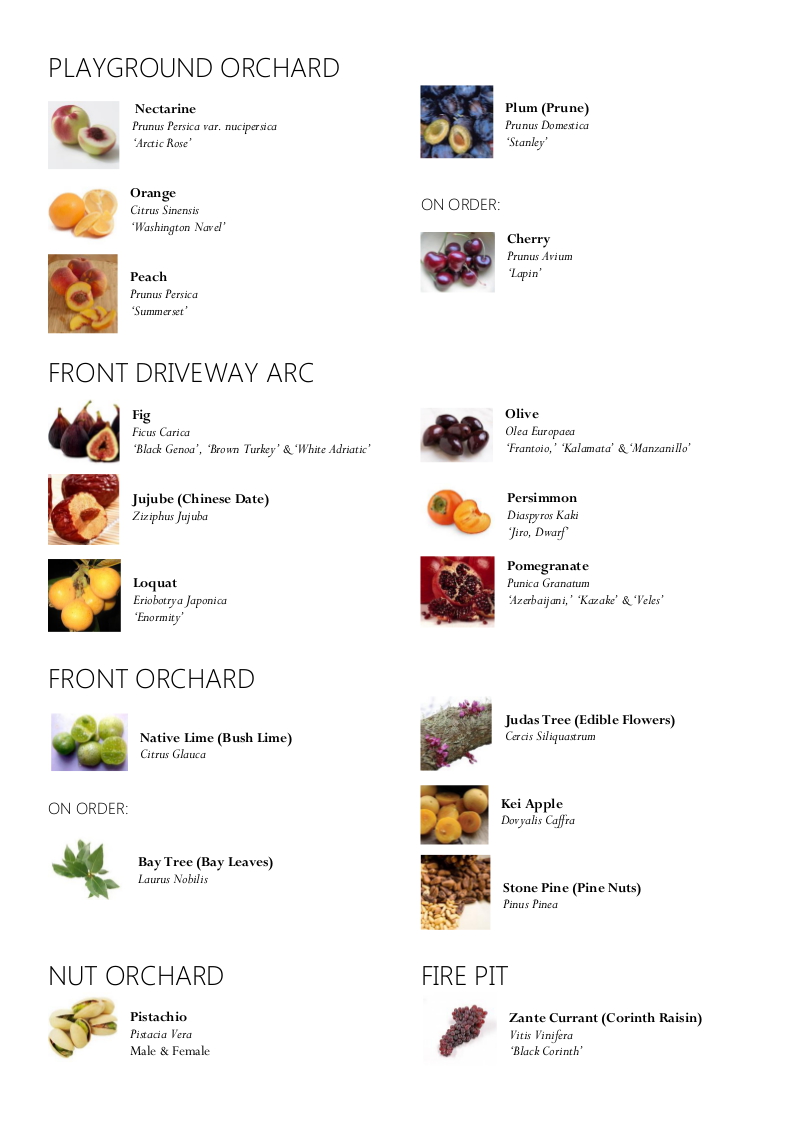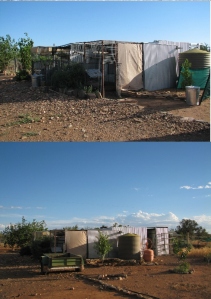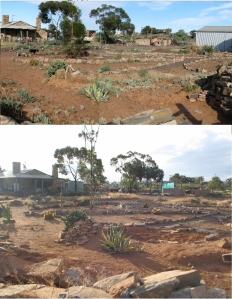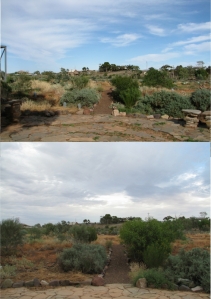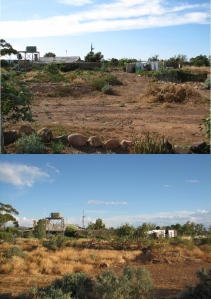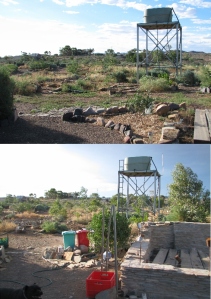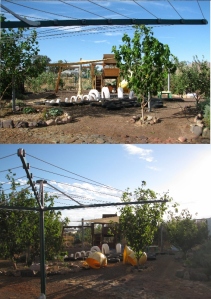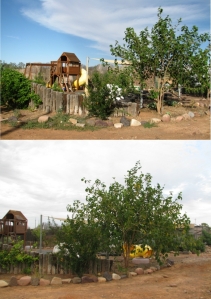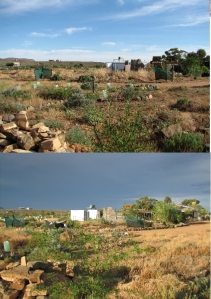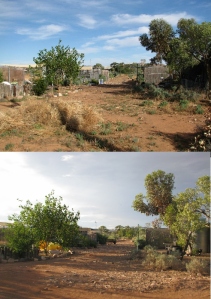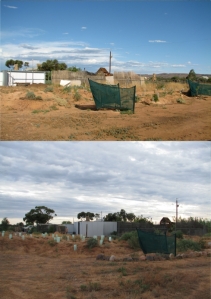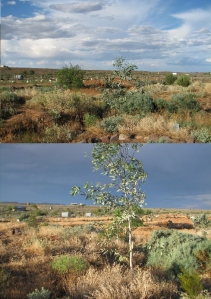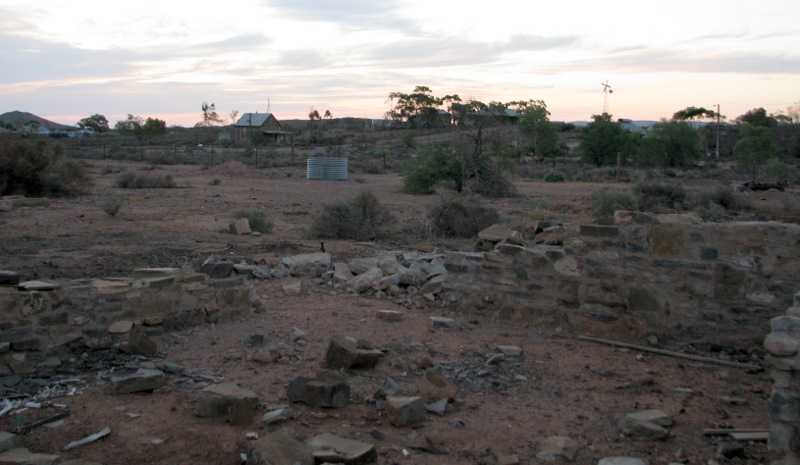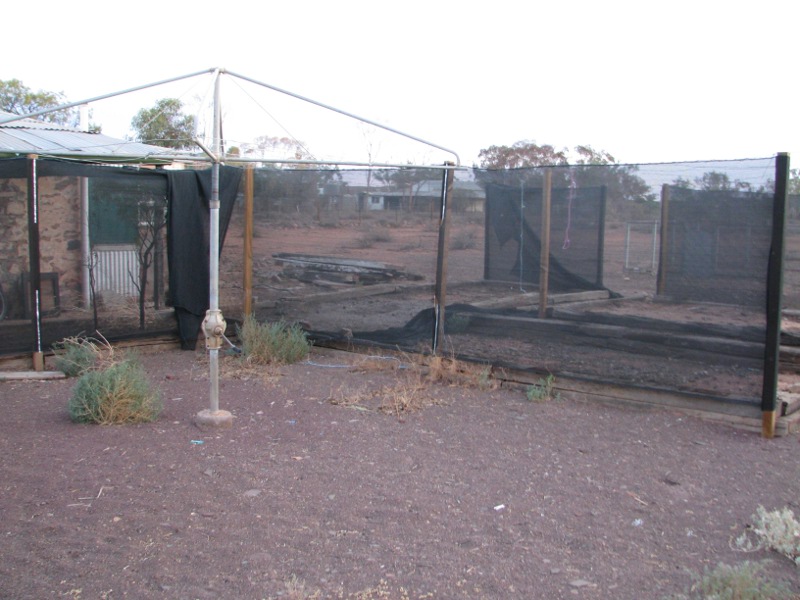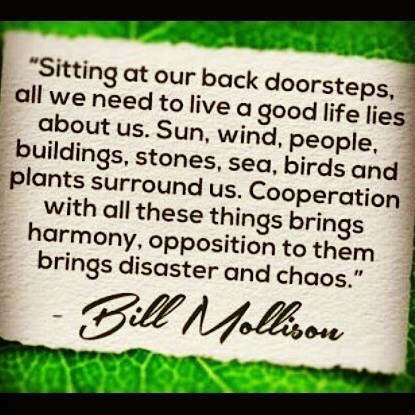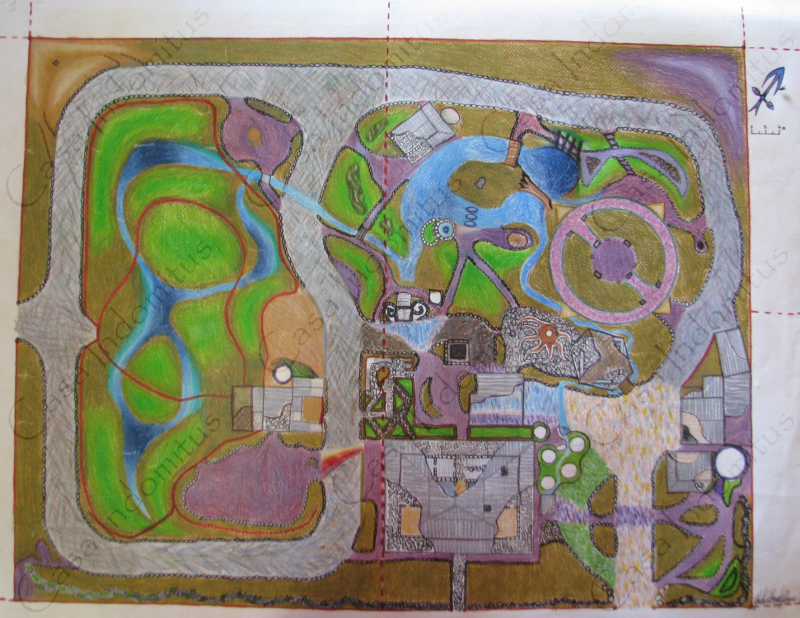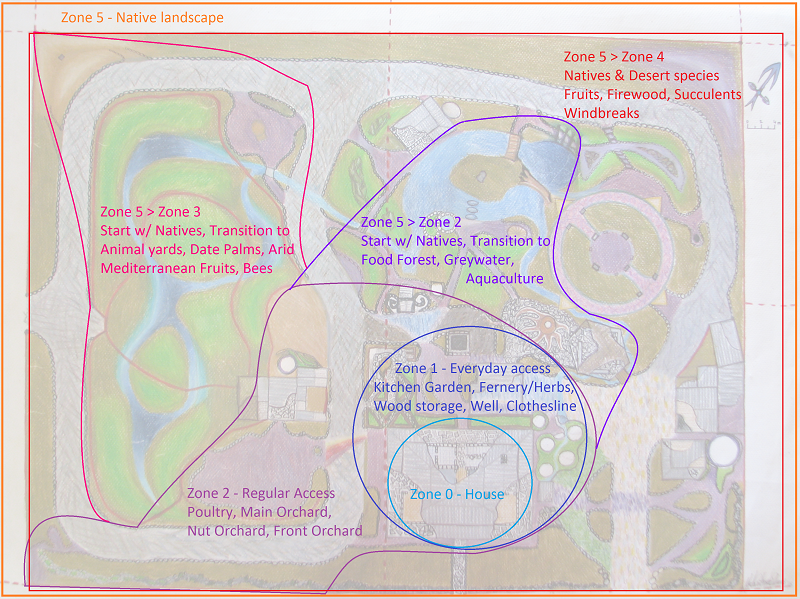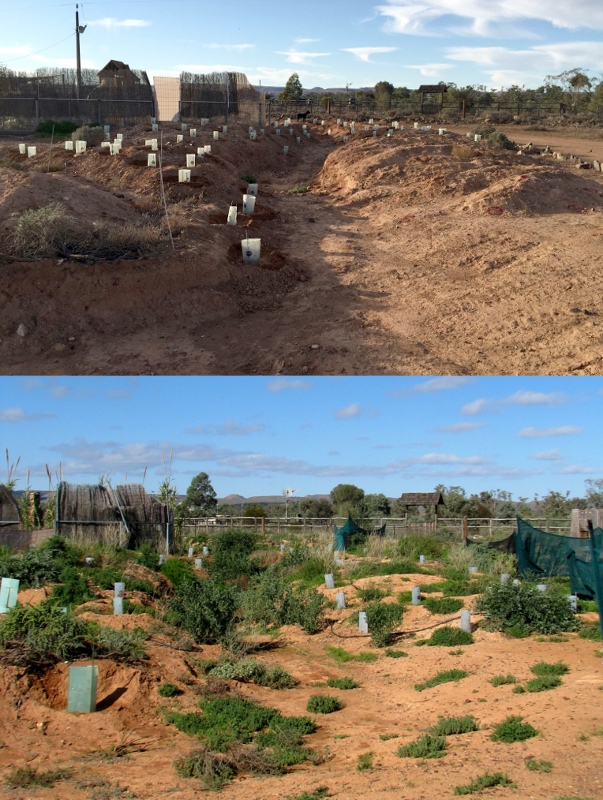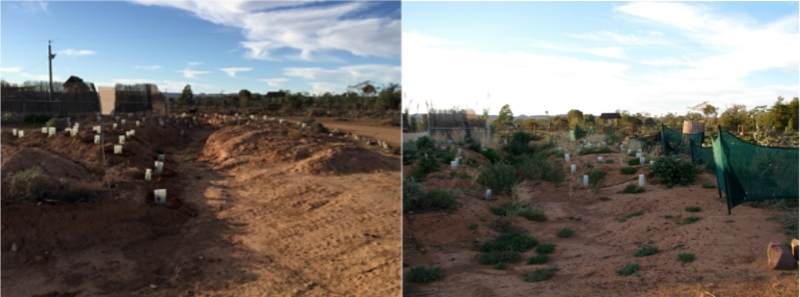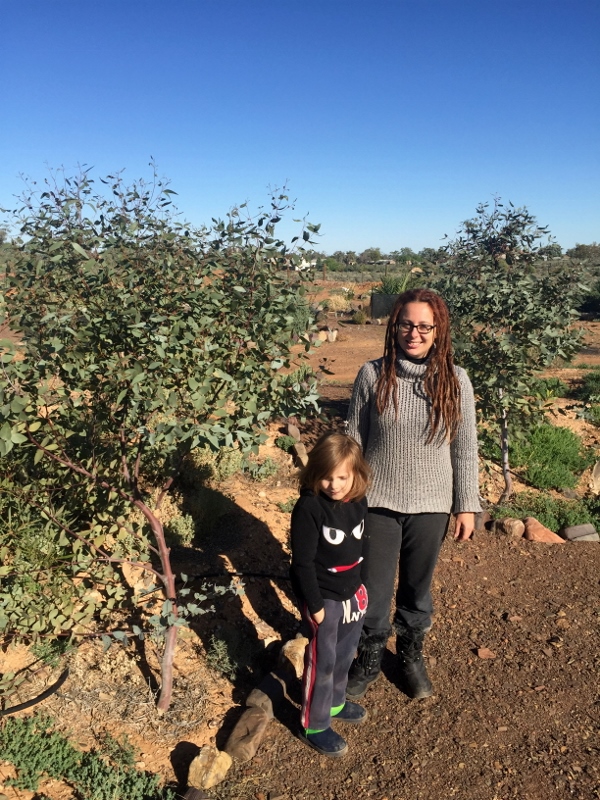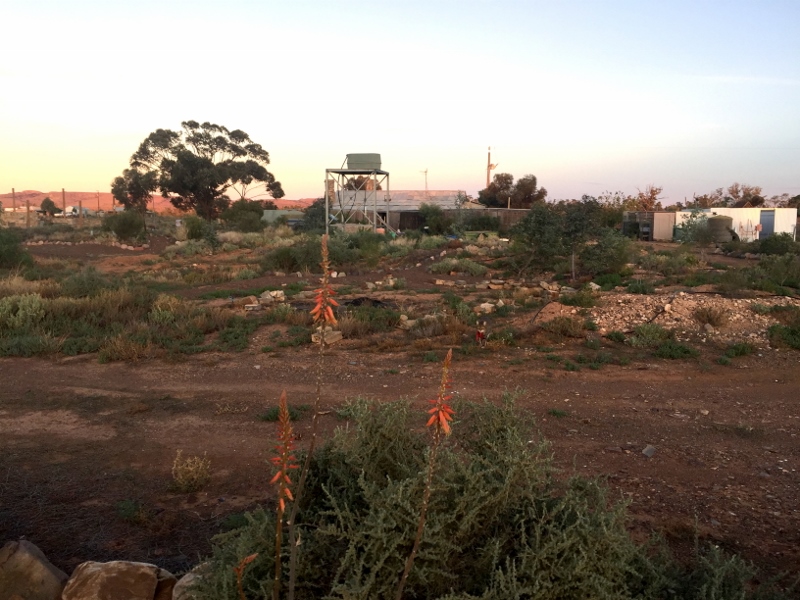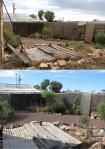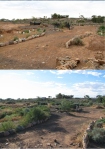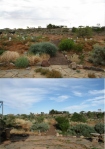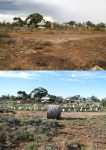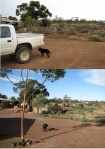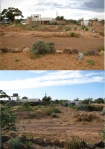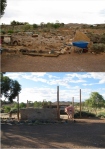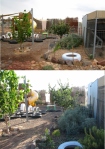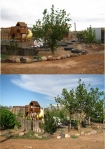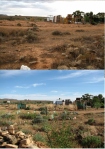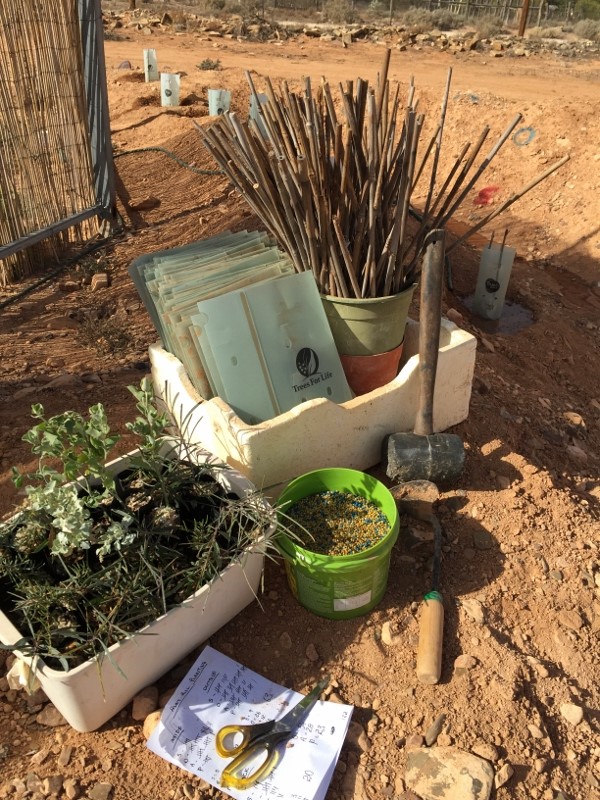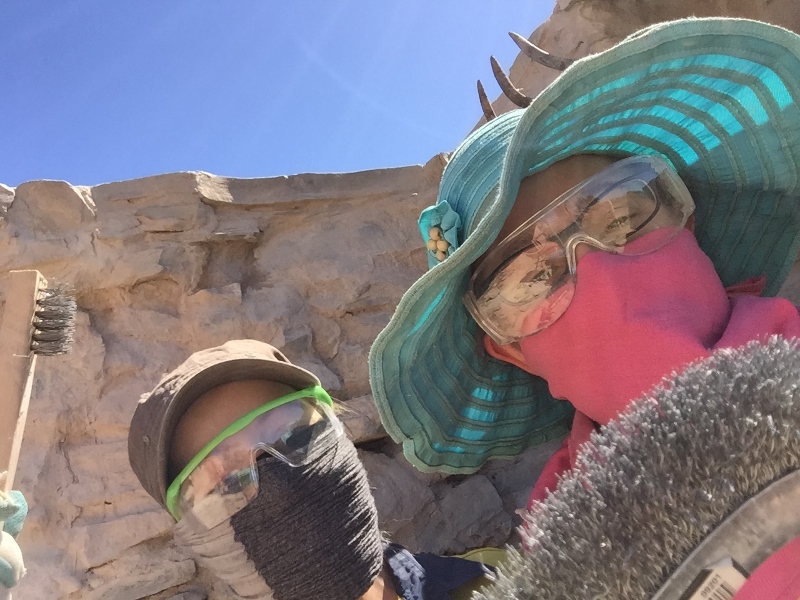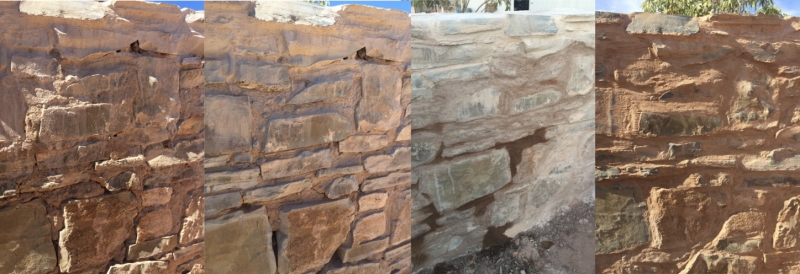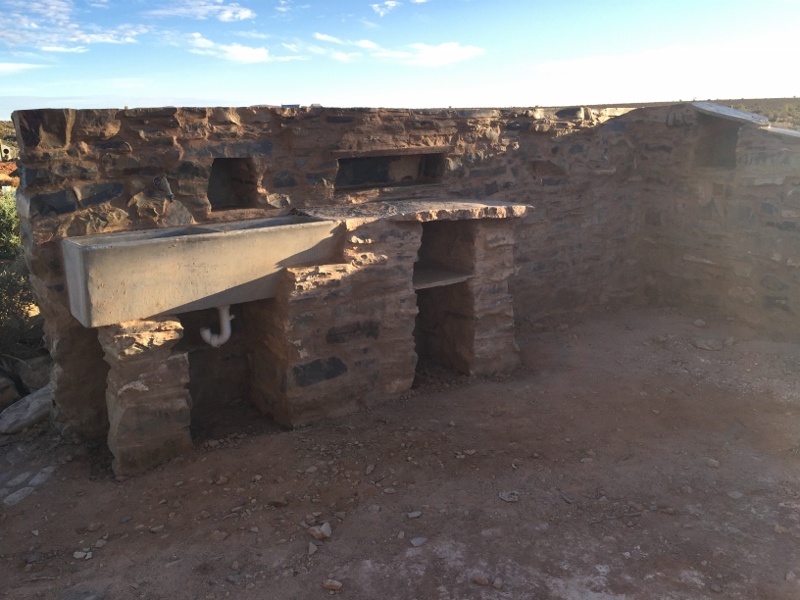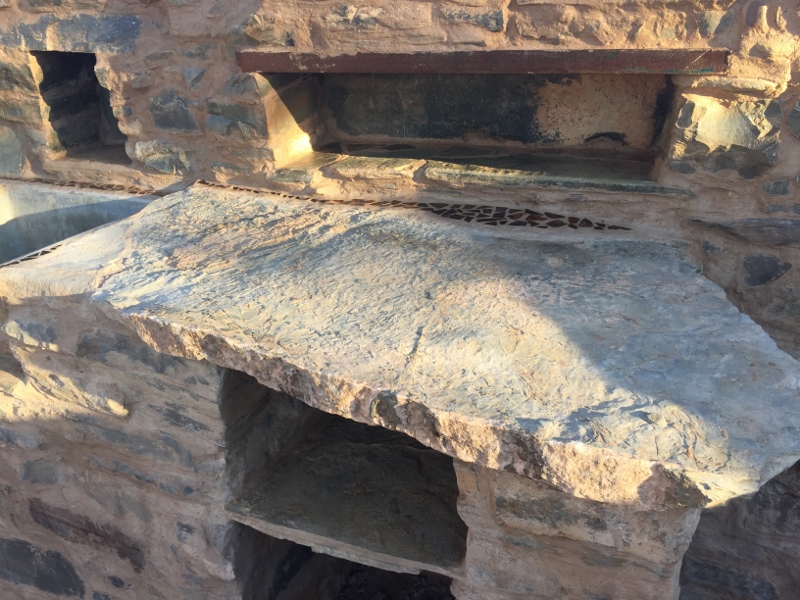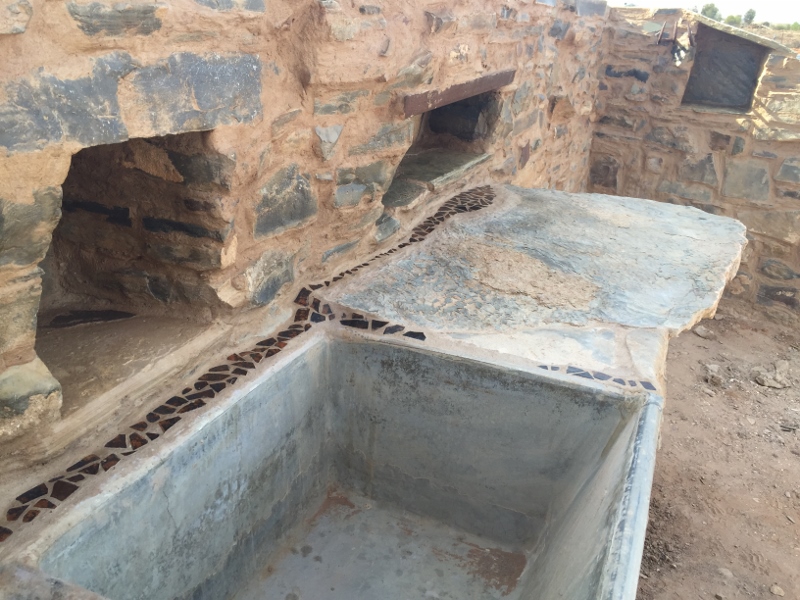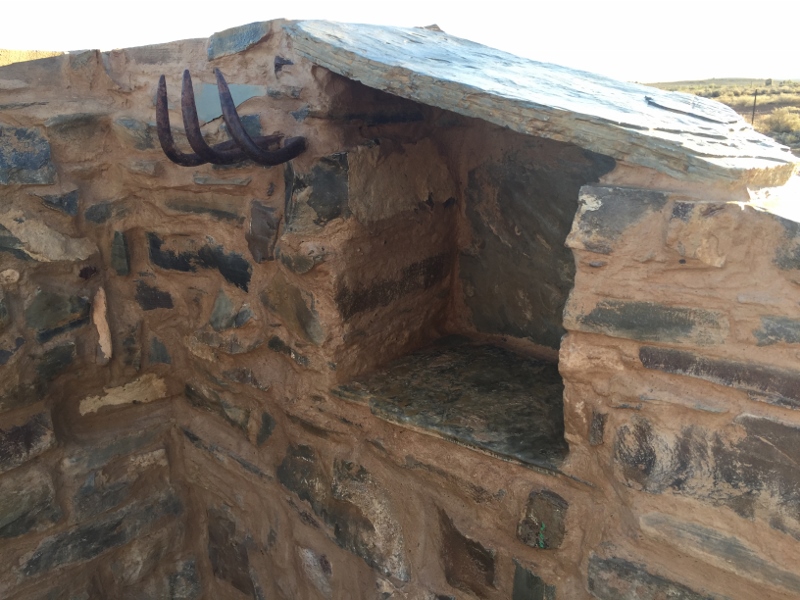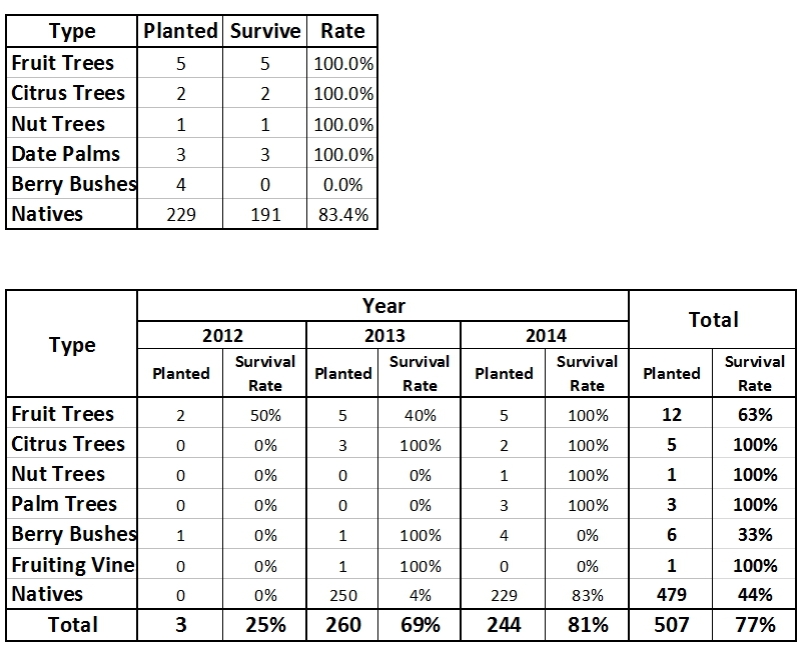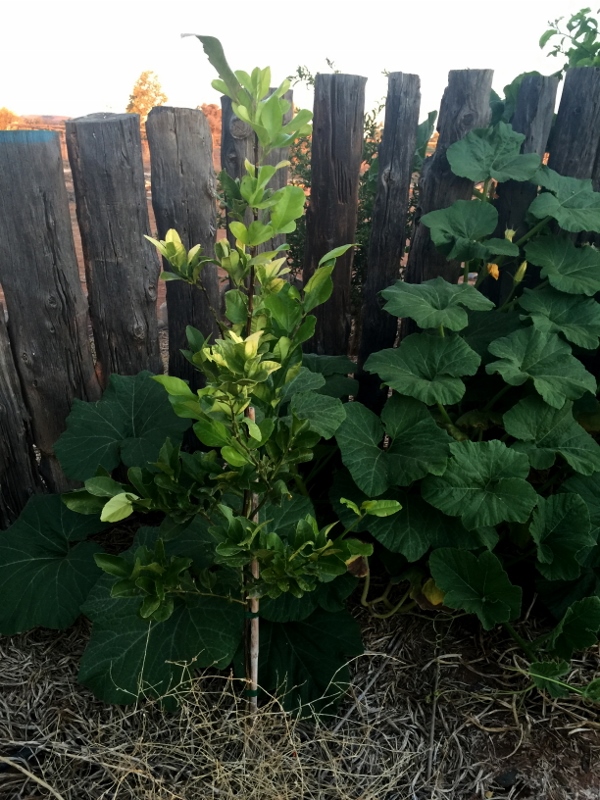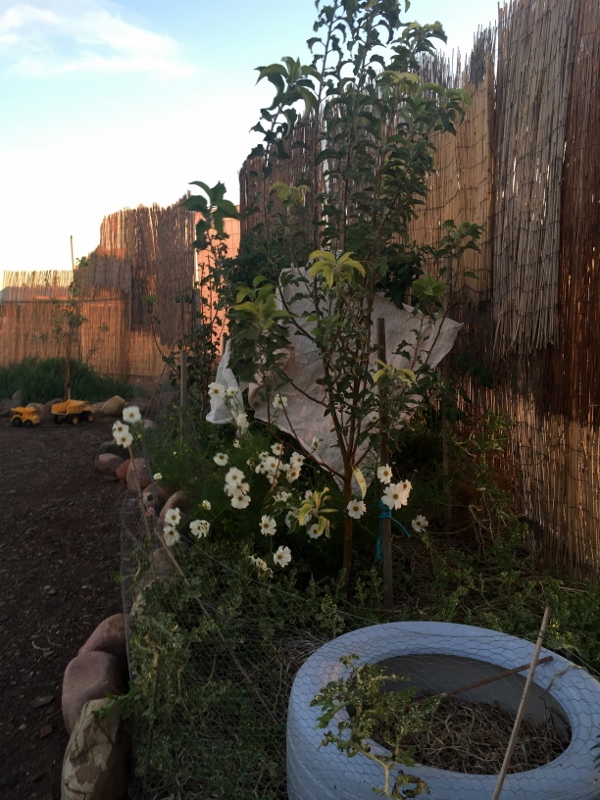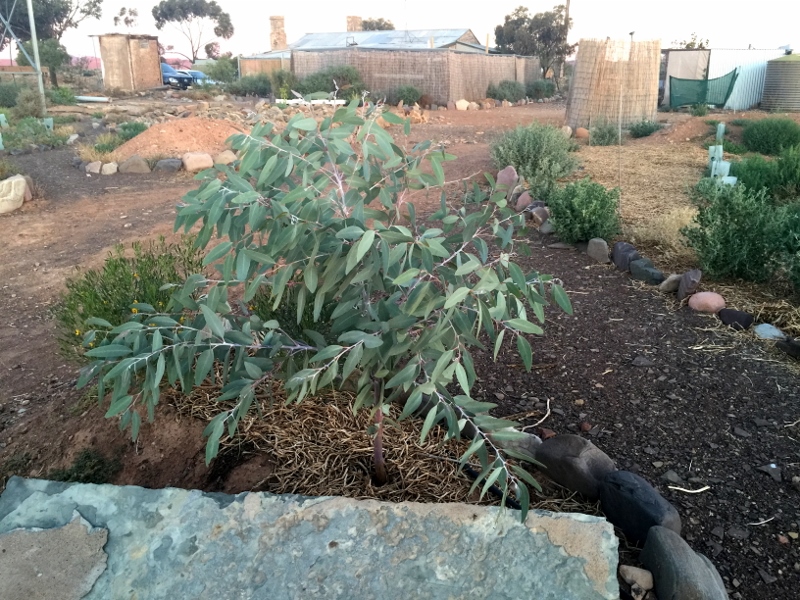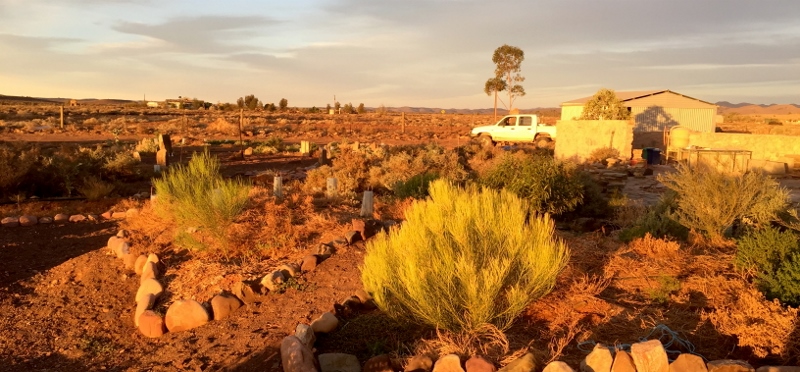All the native planting that we have been doing is vital, making up by far the largest volume of trees in the ground to create the general micro-climate changes that come with large tracts of shade and wind break. However, even though the various acacias are tasty for our future cow and sheep they don’t provide us with much direct food for ourselves so some non native orchard varieties are very important.
The difficulty is that there are a limited range of trees which will prosper in our climate and soil profile so a mix of research, planning, preparation and timing is required to increase our chances of success. The first fruit trees planted while we were preparing for the others were hardier varieties – a quince and two mulberries – which could handle the harsher environment while we prepared for the other, softer species.
Last year we planted a small arc of the inner orchard, which surrounds the playground. This orchard is designed to have the most protected species in it as it will be within two arms of other trees – the windbreak and the front animal yard – on the western side and shielded from northern/eastern winds by the house and shadehouse. The trees in this area have been planned for a number of years and the soil prepared for at least a year prior to planting so we have only been able to put in a few trees each season. Last year we planted two apples (Jonathan and Granny Smith) a pear (Beurre Bosc) and in the nut orchard on the other side of the poultry yards an almond (Self-fertile paper-shell). Add in some lower storey plants and the result a year later is this:
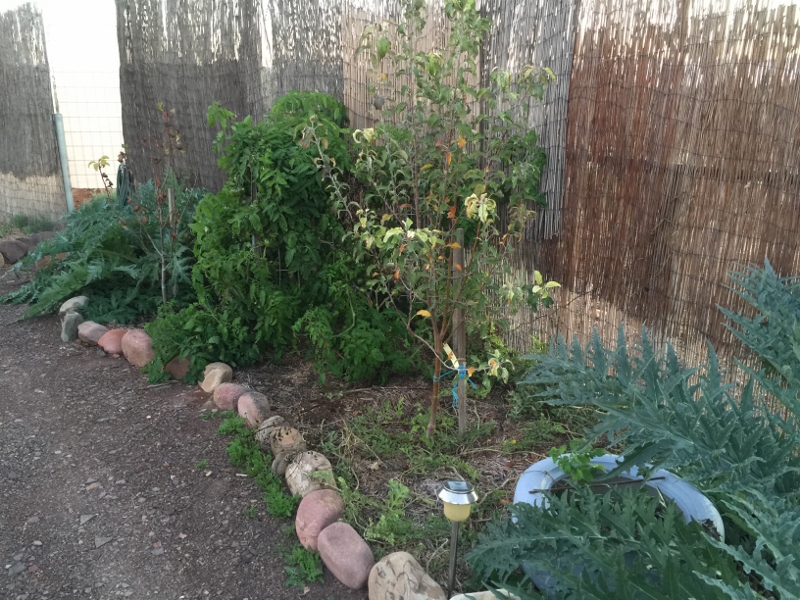
This year we continued in that vein, planting the last of the trees in that arc (except for the cherry that is on order still) and a couple more nut trees in their area (more there next year). 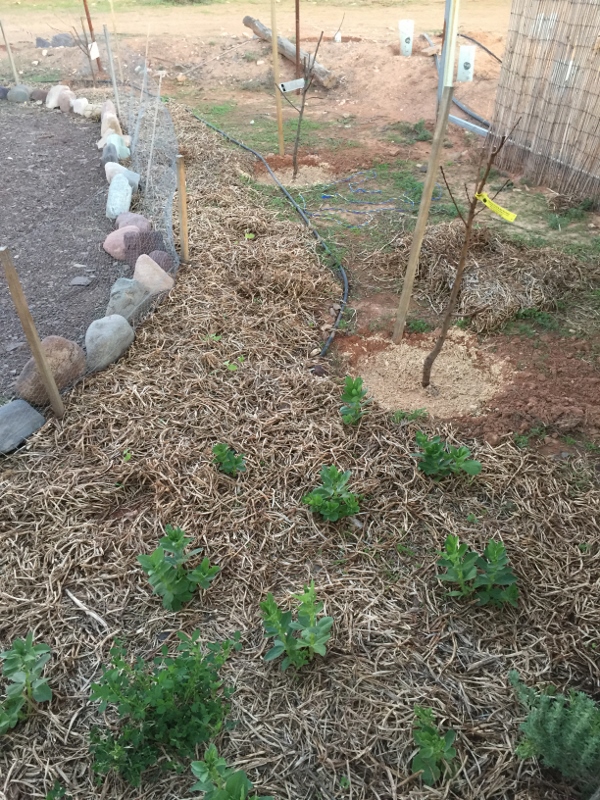
Look at those pretty trees waiting for spring to burst into verdant activity… There’s something very satisfying about planting trees that have been actively worked towards for 3 years now. These trees, finally, here.
Previously that would have been the end of it and we would be back to the natives. The big difference this year however is that with the push out into the side of the block the outer ring of fruit trees on the plan opens up for planting. This ring is designed for more hardy, climatically suited varieties as they will have some protection from the outer windbreak but will be in full sun all afternoon as the access driveway which encircles the whole yard is directly to their west. When looking for species to plant the first thing to identify is that our climate, and even soil conditions, can be loosely classed as ‘Arid Mediterranean’ so trees which prosper in the hot south of Spain, Italy and Greece, through Turkey and Northern Africa are likely to have a good chance here. The same can be said for similar zones in the other continents.
Therefore, after seeing what was available in that range, we purchased a group and set them out in a pattern around the edge of the driveway. Much hole digging by Noven and they went in over the Solstice, significantly increasing our potential food sources. I’m quite excited by a number of the species in this selection – ones I remember from my childhood like Loquats, Persimmons and Figs, those rich flavours of Summer and Autumn. Olives figure large in the group too and will make a welcome addition to the pate and quince paste on our cheese plates in years to come. I’m also very excited by the Jujubes, these are not a fruit I’ve dealt with much before but I really enjoy the flavour (like a date but with a light, almost mousse-like texture even when dry) and I have local friends who have had success with them. The last species in the arc is Pomegranate, which grows strongly in this area and will provide protection for slower neighbours as well as beautiful flowers and lovely fruit.
 Looking West with the driveway turning to the north. Note last year’s pomegranate proving it’s vigour.
Looking West with the driveway turning to the north. Note last year’s pomegranate proving it’s vigour.
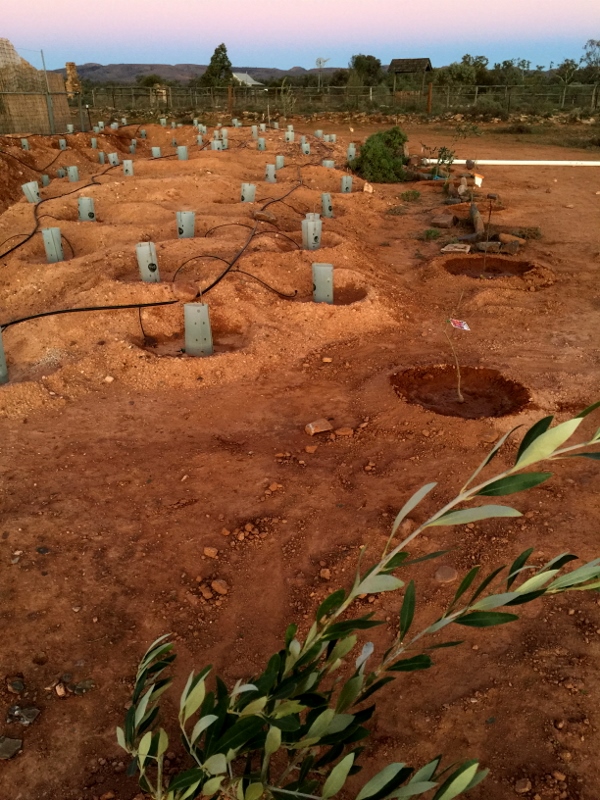 Looking South
Looking South
The Nursery that we sourced the trees from also listed a Native Lime which, when I queried them I was delighted to discover it was indeed the local ‘Bush Lime’ not the more tropical Finger Lime. These trees are quite hard to find, but being a regionally native true citrus they are not an opportunity to miss. They do come with one rather large warning though…. they are very, very prickly. Some spines are as long as 8cm! 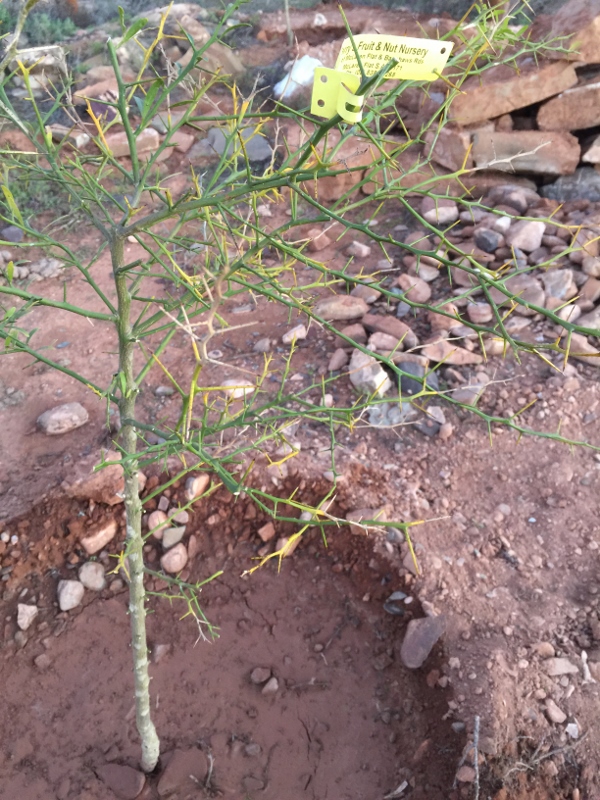 I pruned the ones on the trunk off for transportation.
I pruned the ones on the trunk off for transportation.
The limes hadn’t been in the plan yet to be honest, but I was quickly able to open up the last official orchard zone in the yard – the area along the front fence on the side block. This zone will mostly be planted last as it is needed as a staging area for the future house renovations, but the far end can be done now as an extension of the western windbreak which was next on my planting schedule for this year anyhow. Some quick excavation of the old stone wall and building of the western end of the sculptural wall which will replace it and the area for the limes was ready. You can just see their spindly trunks in the picture, but hopefully they will grow quickly as they are quite beautiful mature trees. 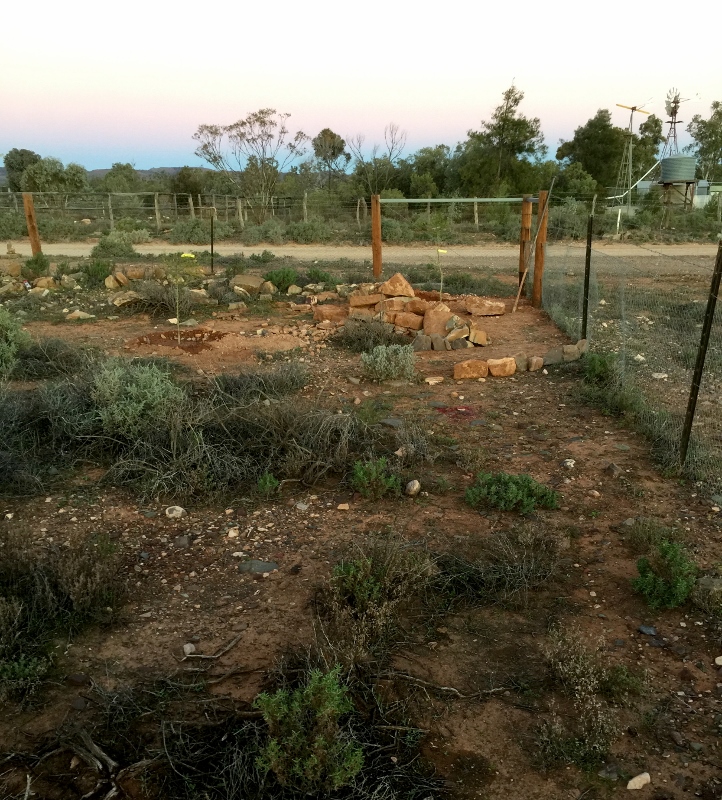 Of course now I’ve ordered a few more species to join them in that corner so there will be another, smaller, wave of fruit tree planting in amongst the natives that fill the rest of the season.
Of course now I’ve ordered a few more species to join them in that corner so there will be another, smaller, wave of fruit tree planting in amongst the natives that fill the rest of the season.
For those who are interested, here is a full list of trees planted in this round and the remaining trees on order for these zones:
